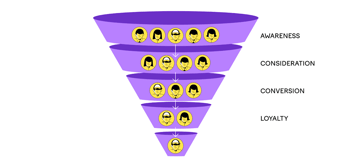3 Sneaky Starbucks takeaways no one is talking about 🤫.
Starbucks ☕ is not a brand that never failed or how about their net margins that are not as big as you think 🤏🏻?
You are about to uncover these secret 🤐 lessons about Starbucks that no one talks about.
1. TATA Starbucks alliance:
Despite clearly being the world's largest coffee chain and having the expertise Starbucks had to partner with TATA for its operations in India. Which is the first of type joint partner that Starbucks ever had in its history. The reason being. Despite having a strong brand image and global coffee expertise Starbucks lacked the know-how of the Indian market and had difficulties managing its operations.
In a realization of the importance of strategic collaboration, Starbucks opted for the TATA alliance. This move underscored that relying solely on the mindset of "We will do it all by ourselves and we don't need any help" can hinder a brand's progress.
The partnership with TATA demonstrated a proactive approach, leveraging local expertise to enhance Starbucks' effectiveness in the dynamic Indian market.
2. Starbucks surprise:
Starbucks' net margin on average stands at around 11 to 12% even after being a "premium coffee brand"
There are a few reasons why Starbucks' net margins are so low. One reason is that the cost of goods sold is high. Starbucks uses high-quality ingredients in its coffee and food, and these ingredients can be expensive. Additionally, Starbucks has a lot of overhead costs, such as the cost of rent and labour.
However, Starbucks is still a very profitable company. In 2022, the company had a net income of $8.7 billion. The point we are trying to make is that a brand no matter how big can have thin margins in the competitive market but you need to ensure that your brand doesn't end up losing all the money and makes some return.
3. The Fallen Starbucks:
Starbucks faced a setback in Australia following rapid expansion between 2000 and 2008, leading to the closure of over two-thirds of its 87 stores. The failure was attributed to a miscalculation of Australia's entrenched coffee culture, where locals favoured strong, milky coffees like flat whites, diverging from Starbucks' sweeter American-style offerings. Oversaturation in major cities, a lack of a local ambience, and pricing issues further compounded the challenge.
Despite these closures, Starbucks hasn't entirely withdrawn from Australia. It has adopted a more strategic approach, maintaining a smaller chain in major cities. By adjusting to local tastes and community preferences, Starbucks aims to overcome past missteps and establish success in the diverse Australian coffee market.


.png?width=352&name=Yellow%20%26%20Blue%203D%20Technology%20Facebook%20Cover%20(23).png)

